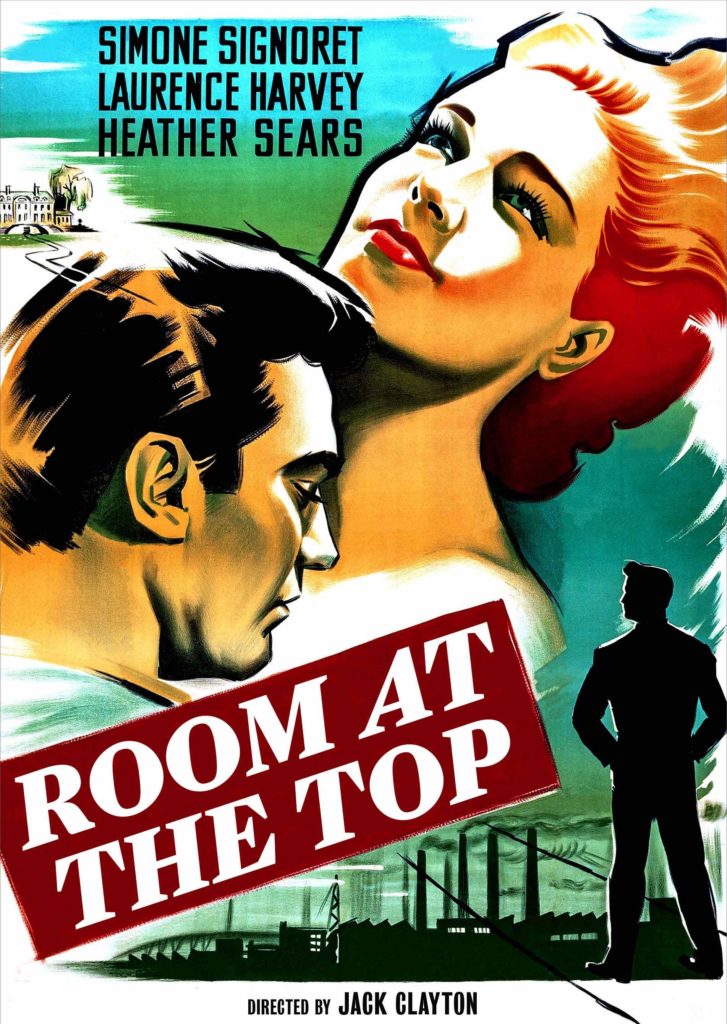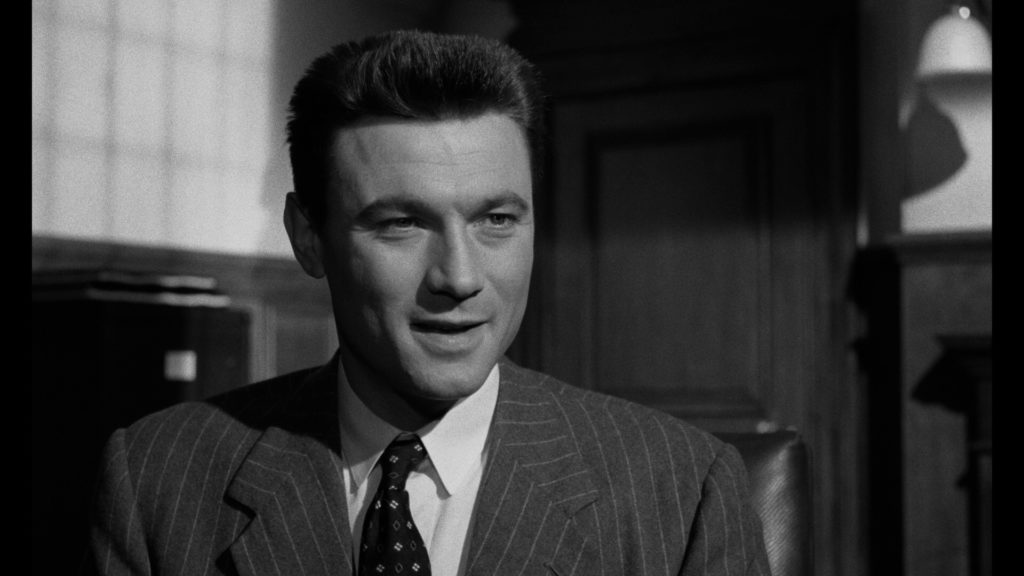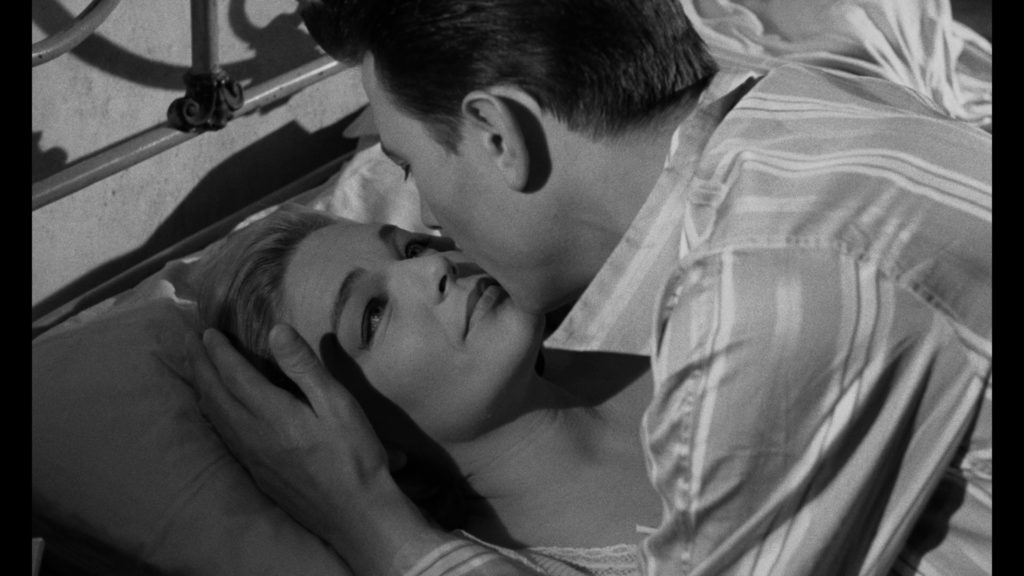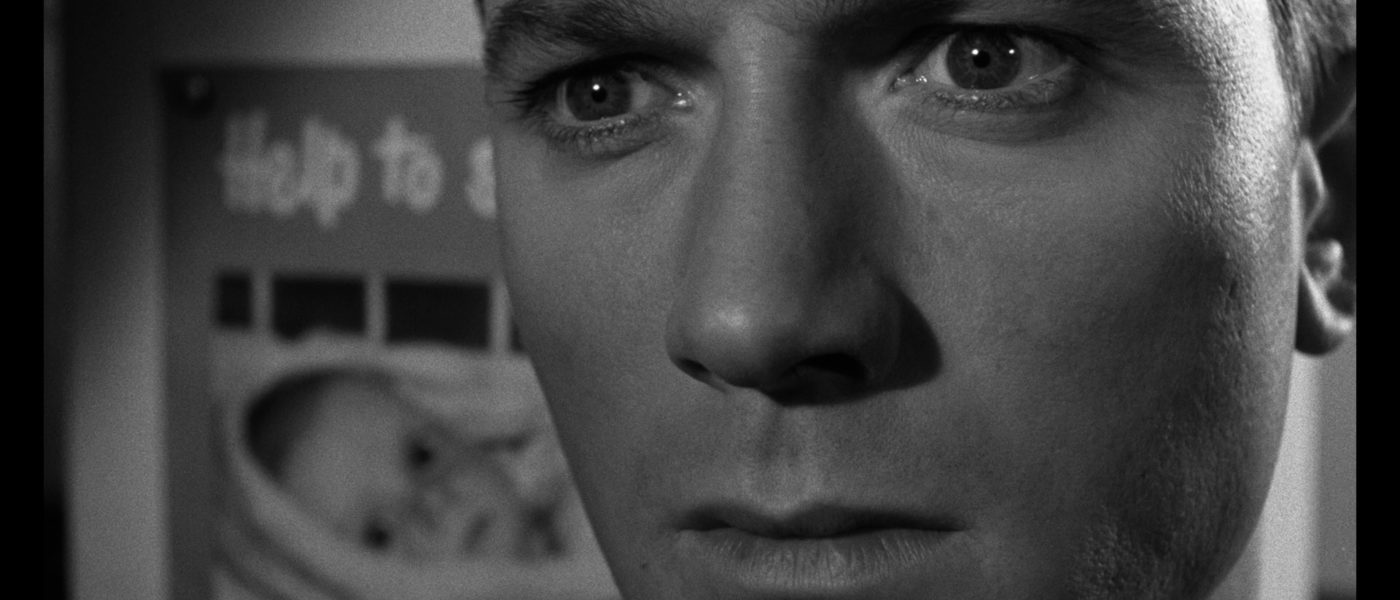A Film Pinnacle Of British Social Realism

DIRECTED BY JACK CLAYTON/1959
STREET DATE: January 14th, 2020/KINO LORBER STUDIO CLASSICS
An unblinking look at social conditions in postwar Britain, 1959’s Room at the Top title-dramatizes the rise of a young man’s ambitions alongside the fall of his emotional well-being. Joe Lampton, as played by Laurence Harvey in a star-making performance, gains the world — or his small corner of it — but loses his soul — or some significant part of it — in director Jack Clayton and screenwriter Neil Paterson’s adaptation of a topical bestseller by novelist John Braine. Gorgeously evocative black-and-white photography from master cinematographer Freddie Francis completes the title-view of a society in flux, upended by a difficult victory, uneasy peace, and uncertain recovery. Dealing head-on with issues exposing the difficulty of social mobility, Room at the Top, part of a vanguard of a then-new movement of social realism in British film known as the British New Wave, captured the wider attention of an audience outside the U.K. first for its adult themes related to frank sexuality, but has remained relevant for its strong core of relatable humanity.

As the film opens, Joe Lampton (Harvey) arrives by train from his working-class village of blockrow housing and textile factories to the more urban and less industrial setting of bureaucratic offices and boarding houses. Sliding stealthily into local civic life by joining an amateur dramatic society, Joe meets two very different women who will play contrasting but equally important roles in the drama of his life: first, a neglected middle-aged wife (Simone Signoret), earthy and sensual; and second, the young daughter (Heather Sears) of a prominent businessman, naïve and open-hearted. Pursuing both romantically, Joe finds himself genuinely attached to the former and drawn deeper to the latter’s money and social position. Warned off by both the married woman’s husband (Allan Cuthbertson) and the girl’s industrialist father (Donald Wolfit), Joe invites tragedy on either end as both women fall prey to his seductive charms.
While possibly sounding in description like the unsympathetic tale of a social predator, the effect of watching Joe Lampton admittedly scheme and emotionally manipulate his way to the “top” is both compelling and surprisingly sympathetic. Laurence Harvey as Joe strangely invites close identification despite his caddish behavior and selfish motivations. The camera fully registers Joe’s varied reactions to a rival’s (John Westbrook) social slights, his boss’s (Raymond Huntley) undue chastisement, and his prospective father-in-law’s stinging attempts to buy him off with a lousy job or a blank check. In all, although one may not have personally experienced the invisible barriers of the British class system first-hand, Room at the Top portrays social rejection and its attending feelings of personal inadequacy with an almost viscerally involving intensity. None of which excuses Joe’s more questionable behavior, of course, but its effective portrayal does make us better understand his actions and motivations.

Understanding is the key to director Jack Clayton’s style here, who brings a wealth of information and strong level of detail to the audience’s privileged view. Especially resonant are Harvey as Joe’s intimate scenes with French actress Simone Signoret, wherein the almost palpable pull of desire against a wiser woman’s better judgment play with a harsh reality belying the genuine emotional tenderness between them. Stealing a few moments of passion in between a landlady friend’s (Hermione Baddeley; Oscar-nominated for her approximate minute-and-a-half onscreen) piano lessons, the warmth felt and affection communicated in these fleeting seconds of screen time stand in stark contrast to the distance and frightening coldness registered past betrayal, loss, and mortality in a grand Cathedral wedding and opulent reception. Yes, as a sequel five years later would make clear, life is indeed cold at the top.
Kino Lorber’s presentation of a 2K restoration brings Room at the Top to its best version yet on Blu-ray. Included is another insightful commentary from Kat Ellinger, who ruminates at length on the film’s dramatizing of British society after the second world war and the gradual maturing of British cinema towards realistically portraying it. Especially interesting is the underaddressed topic of how a film star’s personal life may color and shape what we see on the screen; the inherently dramatic lives of Laurence Harvey and Simone Signoret unusually complementary to the roles they here play. Still well-remembered sixty-old years later, Room at the Top remains a pinnacle of postwar British cinema.
The images used in this review are credited to DVDBeaver, some of which (but not all) are taken directly from Kino Lorber’s Blu-ray release. Thanks to Kino Lorber for providing a Blu-ray copy for review.


